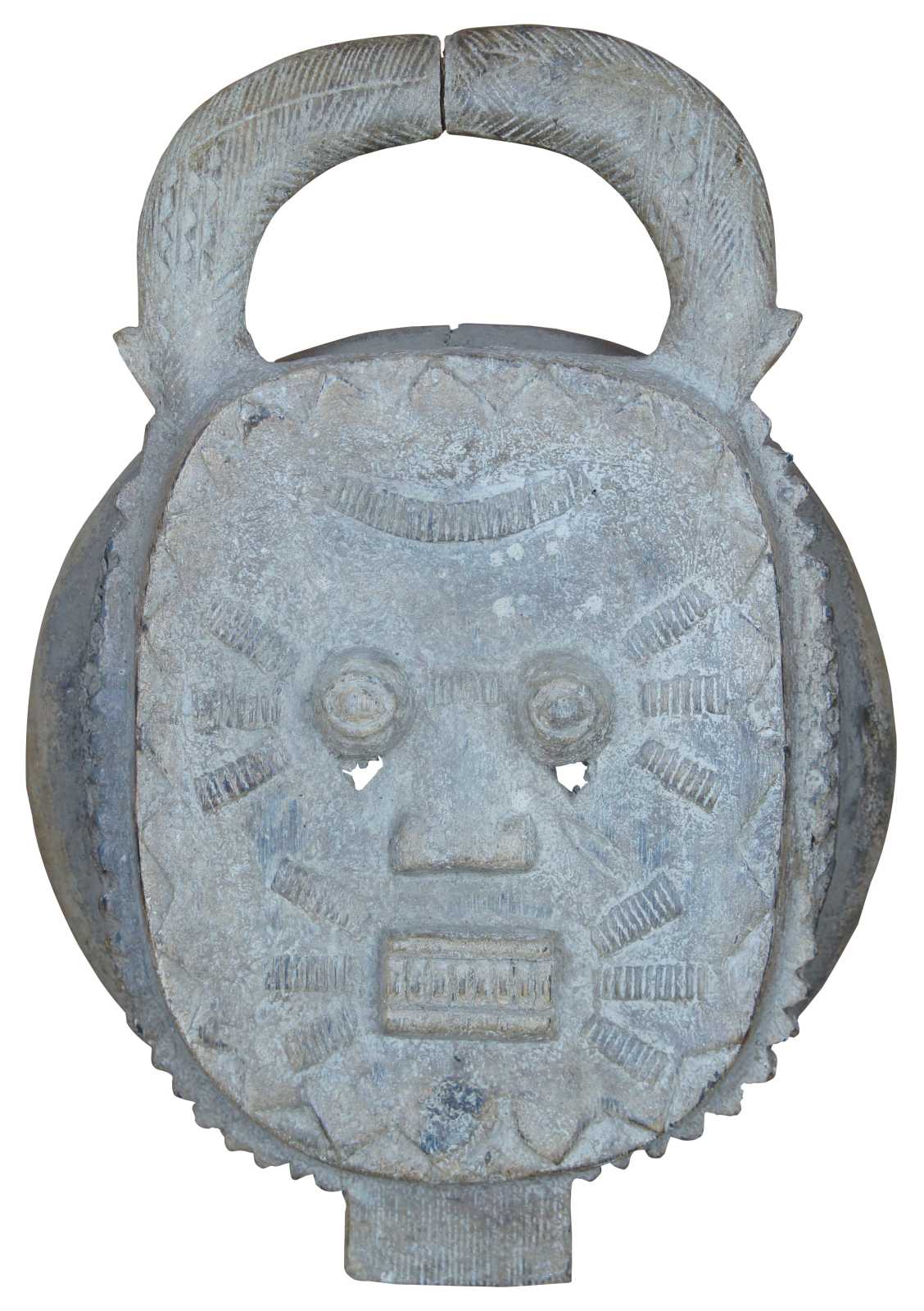
Shipping:
Free Shipping Included
Delivery:
Estimated 2-15 Business Days
Payments:
Credit Card, Check, Cash, PayPal, Apple Pay, Venmo
Returns:
30 Days 100% Money Back Guarantee, Buyer Pays Return Shipping
Description
Rare antique museum quality Baule Kple Kple mask featuring an abstract circular face with animal horns. It is said that the face represents the sun and the horns represent power and strength of the buffalo. This mask was worn by junior males during religious tribal events.
The Baule people are a farming culture from the Ivory Coast in West Africa. They use masks in a daylong festival of dancing and celebration called goli. The tradition developed after 1910, adapted from neighboring cultures.
History of four Baule Masks:
Masks correspond to several types of dances: the gba gba, the bonu amuen, the mblo and the goli. They never represent the ancestors and are always worn by men. The gba gba is used at the funerals of women during the harvest season. It celebrates beauty and age, hence its refined features. The double mask represents the marriage of the sun and the moon or twins, whose birth is always a good sign. The bonu amuen protects the village from external threats; it obliges the woman to a certain discipline; and it appears at the commemorations of death of notables. When they intervene in the life of the community, they take the shape of a wooden helmet that represents a buffalo or antelope and which is worn with a raffia costume and metal ankle bracelets; the muzzle has teeth, which incarnate the fierce animal that is to defend the group.
Goli is the day-long spectacle that normally involves the whole village and includes the appearance of four pairs of masks, music played on special instruments, and, ideally, the jojoyous consumption of a great deal of palm wine. Goli can be performed both as an entertainment and for the funeral of important men. The very characteristic, round-shaped “lunar” goli is surmounted by two horns. It was borrowed from the Wan for a celebration adopted by the Baule after 1900. Celebrating peace and joy, they would sing, dance, and drink palm wine. In the procession, the goli preceded the four groups of dancers, representing young adolescents. The goli would be used on the occasion of the new harvest, the visit of dignitaries, or at the funerals of notables.
The goli kplekple (aslso spelled Kpele Kpele) mask is one of several that appear in the Goli spirit dance. It represents a minor spirit associated with the junior rank of male dancers who perform before the more important masks appear. In keeping with its low status, this mask is made in a simple disk-shaped design and lacks the more complex form and ornamentation that the Baule admire in their important masks. Considered a mischievous mask, the youthful dancer playfully chases young women around the village, goaded by their songs.
Condition
Good antique condition, wear and distressing commensurate with age and use, cracks / splitting / finish loss.
Dimensions
16" x 14" x 17"h